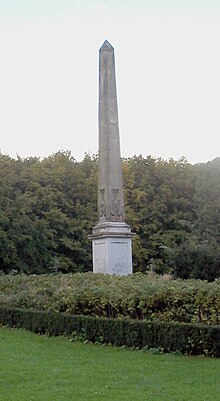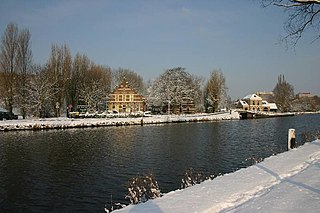
Rijswijk, formerly known as Ryswick in English, is a city and municipality in the western Netherlands, in the province of South Holland. Its population was 55,220 in 2021, and it has an area of 14.49 km2 (5.59 sq mi), 0.53 km2 (0.20 sq mi) of which is water.

The Peace of Ryswick, or Rijswijk, was a series of treaties signed in the Dutch city of Rijswijk between 20 September and 30 October 1697. They ended the 1688 to 1697 Nine Years' War between France and the Grand Alliance, which included the Dutch Republic and the Holy Roman Empire.

Frederick Henry was the sovereign prince of Orange and stadtholder of Holland, Zeeland, Utrecht, Guelders, Overijssel in the Dutch Republic from 1625 until his death in 1647. In the last seven years of his life, he was also the stadtholder of Groningen (1640-1647).

The Biomedical Primate Research Centre (BPRC) is Europe's largest primate animal testing research centre. It is a scientific research institute that performs research that contributes to the identification and development of new medicines against deadly diseases. It is located in Rijswijk and employs about 110 people.

Sion is a hamlet in the Dutch municipality of Rijswijk. It is located on the border with Delft.
Rijswijk is a town and municipality in South Holland, Netherlands.
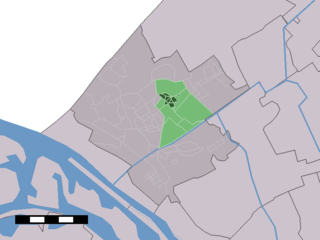
Honselersdijk is a town in the Dutch province of South Holland. It is home to the historic Huis Honselaarsdijk, former palatial estate of the Dutch Princes of Orange. Huis Honselaarsdijk was one of the finest examples of Baroque architecture and grounds in the history of The Netherlands. Today, only part of the outbuildings remain, and these are referred to locally as "De Nederhof".
André Mollet was a French garden designer, the son of Claude Mollet—gardener to three French kings—and the grandson of Jacques Mollet, gardener at the château d'Anet, where Italian formal gardening was introduced to France.
The Stoomcarrousel is an attraction of the Efteling amusement park in the Netherlands. It is an indoor carousel situated in what is now known as the "Carousel Palace" (in Dutch "Carrouselpaleis"; formerly "De Efteling Stoomcarrousel" and originally "Janvier's Stoomcaroussel".

Huis ter Heide is a hamlet in the Netherlands and is part of the Noordenveld municipality in Drenthe.

Huis ter Nieuwburg or Huis ter Nieuburch was a palace in Rijswijk, Holland, Dutch Republic. The symmetrical French Classicist building was probably designed by the Dutch architect Jacob van Campen together with Constantin Huygens and the prince himself. According to Slothouwer the designs were carried out by Arent van's Gravesande who was replaced by the French architect Simon de la Vallée in 1634. The palace was built between 1630 and 1636 for stadtholder Prince Frederick Henry.
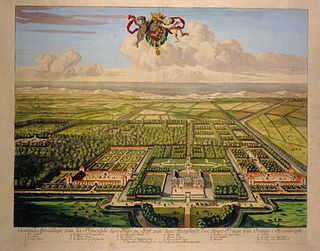
Huis Honselaarsdijk is a former palace and country residence of the Dutch Stadtholders and princes of Orange which lies about 2.6 km southwest of the border of The Hague, the Netherlands. It was one of the finest examples of Baroque architecture in The Netherlands. Today, only part of the outbuildings remain and are known locally as De Nederhof.

Christiaen van Couwenbergh, was a Dutch Golden Age painter.
Sir James Hope of Hopetoun (1614–1661) was a Scottish lawyer, industrialist and politician.
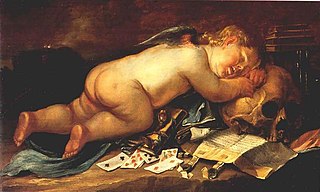
Pieter Moninckx, was a Dutch Golden Age painter.
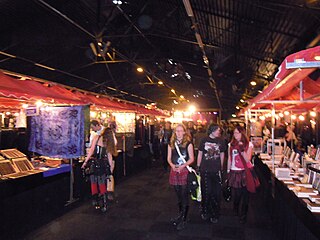
De Broodfabriek is an exhibition and convention center in the Dutch city of Rijswijk. It was founded in 1996 by Henk van der Straaten as the Darling Market, a recreation of the Paddy's Markets in Haymarket, near Sydney's Darling Harbour, which he encountered during a trip to Australia).

Simon de la Vallée (1590–1642) was a French-Swedish architect. The first architect in Sweden to have received formal academic training, he created the Swedish school of architecture.
't Ganzenest is a restaurant in Rijswijk, Netherlands. It is a fine dining restaurant that was awarded one Michelin star in 1994 and retained that rating until 2002 and regained it in 2022.

The 'Laakmolen' near the Hague is a watercolor by Vincent van Gogh that he made in the summer of 1882. Formerly it was thought to have dated from his Etten period 1881. Following identification of the mill, historians now place it the year following.
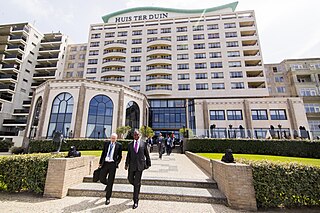
Grand Hotel Huis ter Duin is a seaside hotel and congress center in Noordwijk aan Zee, South Holland, Netherlands, with views over the North Sea. It is notable for being decorated in a clown theme, with many paintings of clowns, and for housing the Michelin-starred Latour restaurant.
This page is based on this
Wikipedia article Text is available under the
CC BY-SA 4.0 license; additional terms may apply.
Images, videos and audio are available under their respective licenses.
